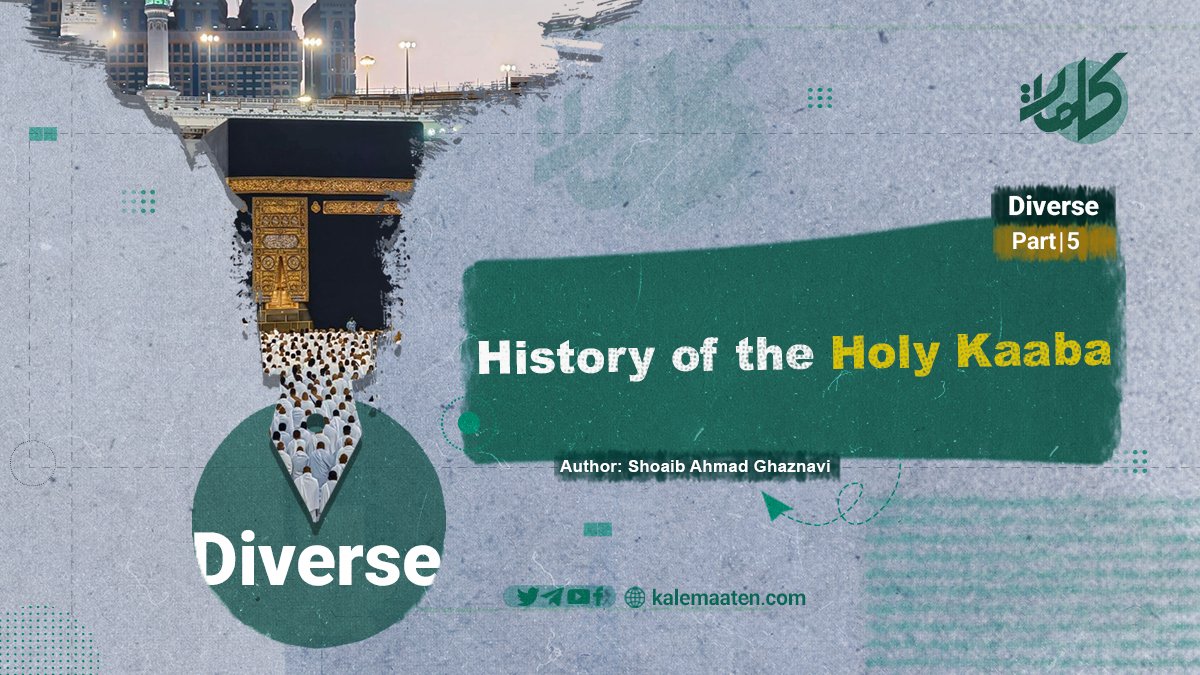
Author: Shoaib Ahmad Ghaznavi
History of the Holy Kaaba (Part Five)
Aghas and Servants of the Holy Kaaba
Since ancient times, the practice of castration and the removal of testicles has been common in certain cultures and religions before Islam. Figures such as Qutfor, the Aziz of Egypt, Sayyed Yusuf, and Origen, the interpreter of the Old Testament, were among those who experienced this condition. Mu’awiya ibn Abi Sufyan was the first to appoint freed slaves to serve in the Kaaba; however, contrary to some historians’ reports, these slaves were not castrated. Yazid ibn Mu’awiya is recognized as the first person to popularize the practice of castration in his society, giving these individuals titles such as Tawasha or Agha.
The word Agha, derived from a non-Arabic root, refers to a wealthy and influential man. In royal courts, they were known as Aghas of the Harem or Tawasha of the Mosque.
Imam al-Bukhari (MAPH) narrated from Abdullah ibn Mas’ud (MAPH) that during a military expedition with the Prophet (PBUH), some companions (MAPH), in the absence of their wives, suggested castrating themselves, but the Prophet (PBUH) disapproved. Al-Qurtubi also emphasized that castrating animals is not permissible unless for a specific reason, such as improving meat quality or preventing harm.
Muhammad Tahir al-Kurdi mentioned in Al-Tarikh al-Qawim that the employment of Aghas in Masjid al-Haram first occurred in 557 AH. Prior to that, they served in Masjid al-Nabawi. Their employment conditions included memorizing the Quran, knowledge of Islamic jurisprudence, being castrated, and residing in the Haram for seven consecutive years. They were summoned by the Sheikh of the Aghas and were granted Saudi citizenship. In 1399 AH, their employment was discontinued, and the Saudi government honored and recognized their service. Recently, a charitable organization has been established for them, and they are responsible for 42 different tasks in the Haram, including cleaning the Mataf, separating men and women during Tawaf, assisting the Haram’s Khatib, and more. They also wear specific uniforms.
The Black Stone (A Piece from Paradise)
The Hajar al-Aswad (Black Stone) is placed in the eastern corner of the Sacred Kaaba. It marks the starting point of Tawaf around the House of Allah and is considered one of the clear signs of Allah in the Haram.
It has been narrated that this stone was originally whiter than milk but turned black due to the sins of people. It is positioned about one and a half meters above the Mataf and consists of eight small fragments, with the largest being the size of a date. It is encased in a thick silver frame.
The visible black portion of the stone is only part of its entirety; the remainder, inside the Kaaba, remains white. This was observed by Muhammad ibn Nafi’ al-Khuza’i when the Qarmatians removed it, noting that its top was black while the inside remained white, measuring about half a meter in length.
The Hajar al-Aswad has been subject to multiple attacks throughout history. One of the most well-known incidents occurred in 317 AH when the Qarmatians removed it and took it to Hajr in Al-Ahsa, keeping it for 22 years before returning it to the Kaaba in 339 AH. The most recent attack occurred during the reign of King Abdulaziz in 1351 AH when an individual broke off a piece of the stone and tore part of the Kaaba’s covering. He was later sentenced to death for his actions.
The misconception that some refer to Hajar al-Aswad as Hajar al-As’ad should be corrected; the correct name is the one chosen by the Messenger of Allah (SWT), as he did not speak out of personal desire.
One of the miracles of the Hajar al-Aswad is that Allah has protected it from being worshiped by polytheists, and it will testify on the Day of Judgment for those who have touched it sincerely.
Ibn Abbas (MAPH) narrated that the Messenger of Allah (PBUH) said: “The Black Stone will come on the Day of Judgment with two eyes and a tongue that speaks, testifying for those who touched it with sincerity.”
Thus, this stone is a piece from Paradise, the ultimate abode of believers. Kissing, touching, and wiping one’s hand after touching it is a Sunnah and an act of following the Prophet (PBUH), but the stone itself has no power to bring benefit or harm. During overcrowding, it is sufficient to gesture towards it and say Allahu Akbar without harming others.
The Messenger of Allah (PBUH) said regarding the Hajar al-Aswad and the Rukn Yamani: “Touching them erases sins.”
Imam al-Nawawi (MAPH) mentioned that it is not appropriate for women to kiss or touch the Hajar al-Aswad unless during times when the Mataf is empty, such as at night, to avoid harm.
It is narrated that Aisha (MAPH) performed Tawaf at night, away from men. A woman suggested: “O Mother of the Believers, let us go and touch the Black Stone.” Ayesha (MAPH) replied: “You go alone.”
Many other narrations also discourage the mixing of men and women during the touching of Hajar al-Aswad. Therefore, it is not appropriate for a Muslim woman, who has come to visit the sacred House of her Eternal Lord seeking His pleasure, to violate Islamic principles by mingling with men just to fulfill a Sunnah. Kissing or touching the Hajar al-Aswad is not a condition for Hajj or Umrah; it is merely a Sunnah.
The Yemeni Corner (Rukn Yamani)
The Rukn Yamani is located in the southwestern part of the Kaaba and is named so because it faces Yemen. Touching it (without kissing) is a Sunnah, and if one is unable to do so, they should pass by without pointing or saying Takbir.
The Prophet (PBUH) said about the virtues of the Rukn Yamani and Hajar al-Aswad: “Touching them erases sins.”
The Prophet (PBUH) used to wipe his blessed hand over it, and if there was no crowd, he would touch it during every circuit of Tawaf. This is an act that many people neglect.
Continues…


